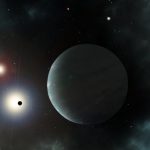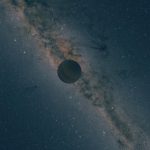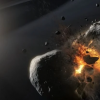Planets more hospitable to life than Earth may already have been discovered0
- From Around the Web, Space
- October 10, 2020
At least two dozen planets outside the solar system might be better for life than Earth.

At least two dozen planets outside the solar system might be better for life than Earth.

Astronomers using ESO’s Very Large Telescope Interferometer have captured the first direct images of the recently-discovered giant planet Beta Pictoris c.

The first results from ESA’s Characterising Exoplanet Satellite (Cheops) exoplanet mission has revealed one of the hottest and most extreme planets orbiting another star. Located 322 light years away in the constellation of Libra, WASP-189 b is an ultra-hot Jupiter with a temperature so high that iron boils into a gas.

The pi planet’s surface is probably too hot to support life as we know it.

Astronomers have discovered two planets orbiting a bright dwarf star in the binary stellar system Gliese 414.

Extrasolar planets hosted by stars with sufficiently high carbon-to-oxygen ratios could be made of diamonds and silica, according to new research by Arizona State University and the University of Chicago.

Using NASA’s Transiting Exoplanet Survey Satellite (TESS) and several ground-based telescopes, astronomers have discovered a Jupiter-sized planet orbiting a nearby white dwarf star called WD 1856+534.

Using NASA’s Transiting Exoplanet Survey Satellite (TESS) and the HARPS fiber-fed Echelle spectrograph mounted at the 3.6-m telescope of ESO’s La Silla observatory, astronomers have discovered and confirmed two massive transiting planets around the G-type dwarf star TOI-763.

Several missions this year are seeking out life on the red planet. But would we recognise extraterrestrials if we found them?

Free-floating, or rogue, exoplanets — free-floating planetary-mass objects that do not orbit a star and instead travel through space — could be surprisingly common in our Milky Way Galaxy; and NASA’s upcoming Nancy Grace Roman Space Telescope (Roman) will detect at least 250 such free-floating planets with masses down to that of Mars, according to a new paper published in the Astronomical Journal.



